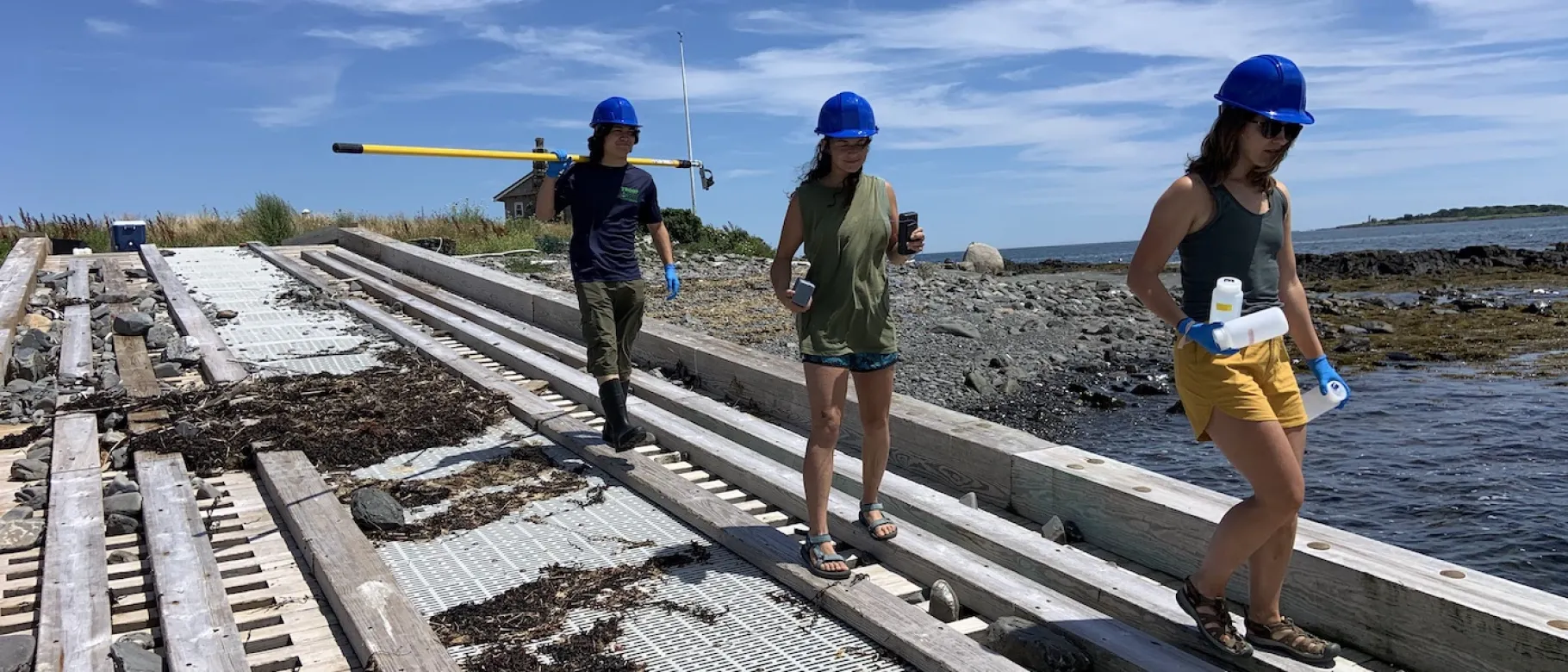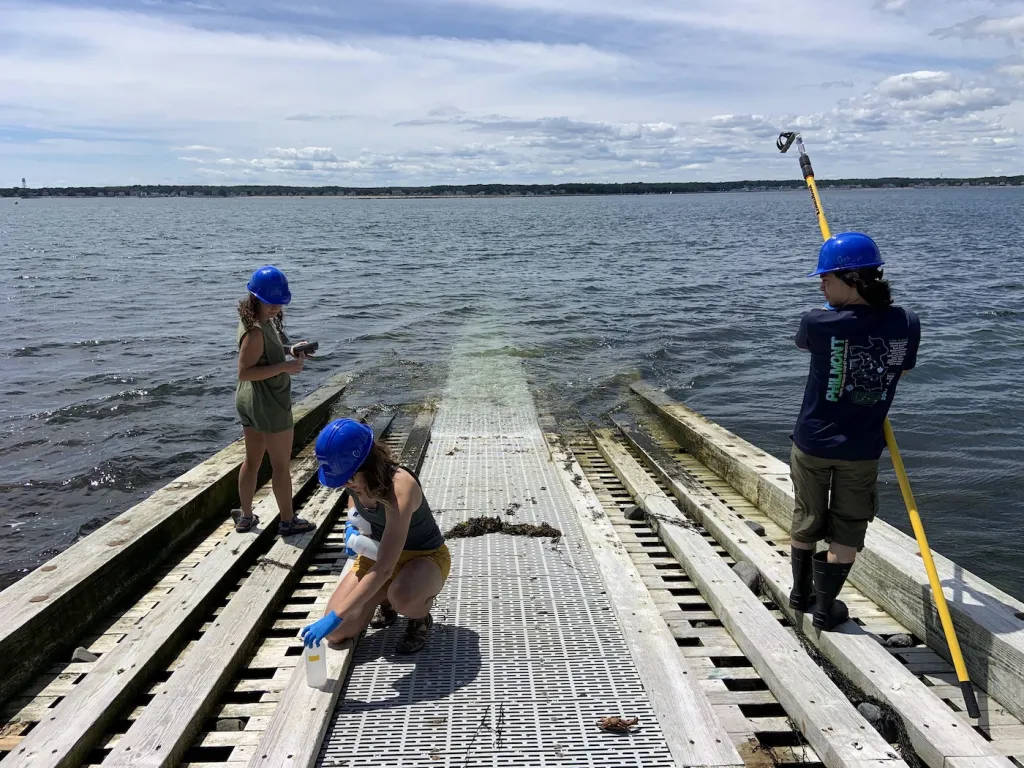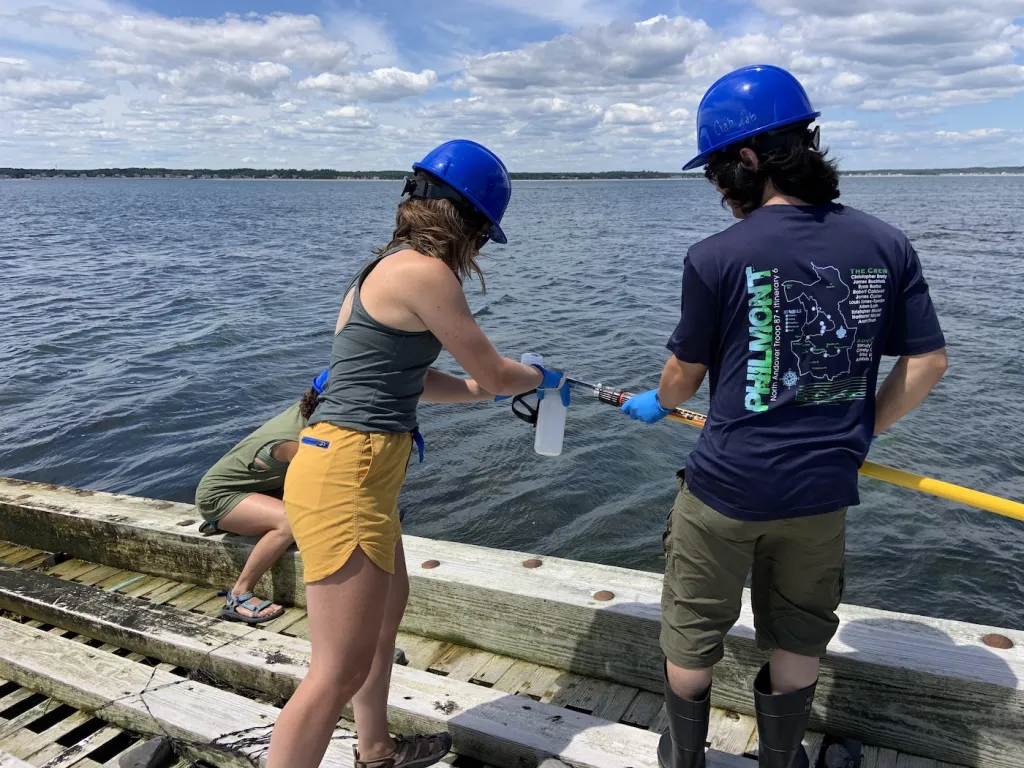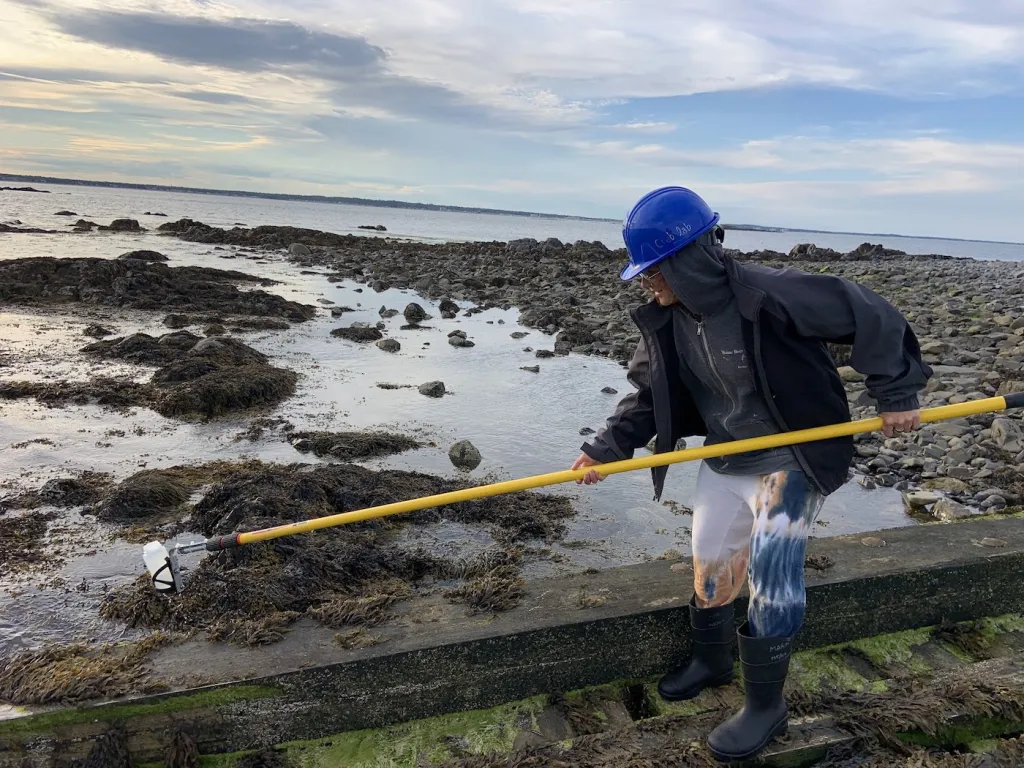Research project identifies species living in the waters off UNE’s Biddeford Campus using eDNA

From the mouth of the Saco River near Camp Ellis to the ocean surrounding Ram Island, faculty and student researchers are collecting water samples to help them identify species living in those waters through DNA sequencing.
“Environmental DNA (eDNA) is really cool because every organism is shedding it into the environment,” said Emily Pierce, M.S., B.S., a Ph.D. candidate at the University of Maine, who is conducting an eDNA research project in the lab of Markus Frederich, Ph.D., professor in the School of Marine and Environmental Programs.
In addition to Frederich, who is serving as her advisor, Pierce is working with Associate Professor Carrie Byron, Ph.D., Assistant professor John Mohan, Ph.D., both of the School of Marine and Environmental Programs, as well as three UNE graduate students and several UNE undergraduates.
“Using different techniques, we can discover through this DNA what kind of animals are out there, what kind of algae, plankton, sharks, fish. We can identify all sorts of different species with just a single water sample,” Pierce explained.
Once a month, students go out to collect samples from the river near UNE’s boat dock and the waters around Ram Island. Three times a year, in spring, summer, and fall, they do 24-hour eDNA sampling by collecting water every two hours over the course of one day.
“Not only are we getting coverage of the area near campus over several years, we are also getting a profile of 24 hours over three different seasons,” Pierce stated. “This shows us what kind of animals, plants, algae, and things might be passing through at certain times.”
“Our long term eDNA survey will provide a comprehensive data set that supports and enhances multiple ongoing studies,” Frederich said. “We are specifically looking for seasonal changes in fish, especially sturgeon, and in invasive species, as well as other species. This kind of exploration can support specific hypotheses, like seasonality of certain animals, but it can also lead to unexpected new discoveries.”
Identifying species through eDNA, instead of searching the actual animals has not been done before in the waters off the UNE campus.
“The overall goal is to set a baseline for what species are out there and what can we actually detect,” Pierce commented. “We can maybe answer some more specific questions about migration patterns or patterns in detection over time. If we do this sampling again, say in 10 or 20 years, we can see how the communities have changed in the face of climate change or pollution.”
Frederich says when the study is completed, the data collected can be used in multiple ways. “The data we gather will be used in various classes,” he stated. “All data will available for UNE students and faculty.
The study is funded through an internal UNE mini grant and supplemented through an ongoing eDNA EPSCOR National Science Foundation grant.


